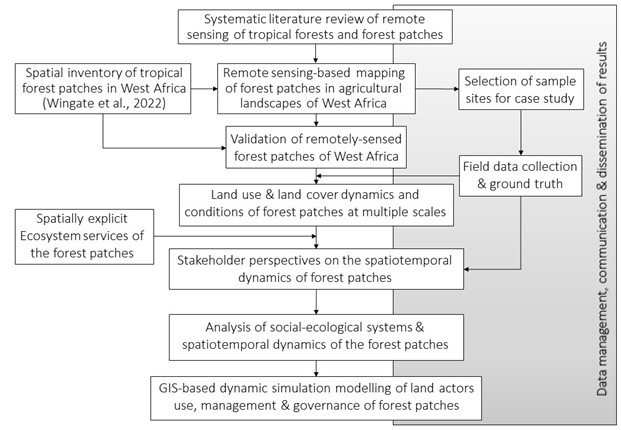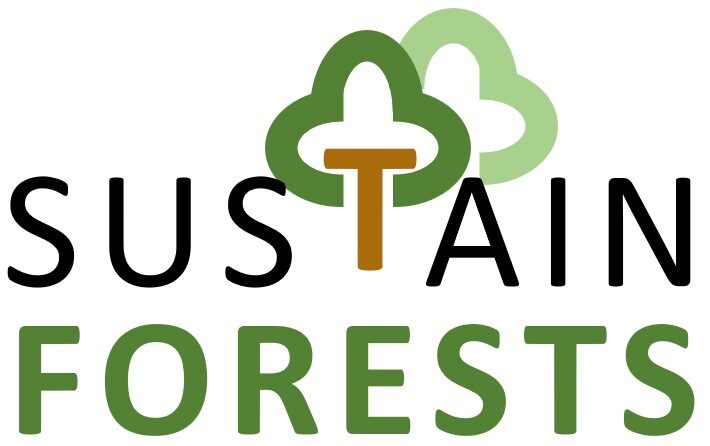PhD project: Multiscale modelling of spatio-temporal dynamics of forest patches in West Africa
Chima Iheaturu
Forest landscapes within West Africa have undergone deforestation due to small-scale agricultural expansion, leading to the fragmentation of the once contiguous Guineo-Congolian rainforests. These surviving forest patches, although they may be small, still provide crucial ecosystem functions, serve as habitats for biodiversity, are globally important carbon sinks, contribute diverse ecosystem services and functions, and sustain a vast number of livelihoods (Ifejika Speranza 2020). Although existing theories of agricultural expansion, intensification, and forest transition explain agriculture-induced deforestation, they do not explain the persistence of forest patches in the context of agricultural expansion (Ifejika Speranza, 2020). There is relatively limited knowledge about forest patches in the Guineo-Congolian rainforests and the Guinea forests, in contrast to the Congo Basin forests in central Africa. For instance, little is known about how the interactions and feedbacks among socio-cultural, economic, and institutional factors affect local and regional decision-making processes, and how these, in turn, determine the status, use, and management of forest patches (Ifejika Speranza 2020). Unless explicit attention is paid to these interactions and feedbacks, forest patches in the increasingly fragmented agricultural landscapes of West Africa are most likely going to disappear in the near future (Ifejika Speranza 2020). Hence, having a clear understanding of both their spatial and temporal dynamics, and the factors involved in their loss, is important for identifying ways to ensure their conservation and sustainable use, and their continued contribution to human livelihoods (Ifejika Speranza, 2020). Which aspects of the social-ecological systems (e.g., land-use, governance arrangements, markets, population, climate change), in which they are embedded drive the spatio-temporal dynamics (e.g., persistence, expansion, and decline) of forest patches in agricultural landscapes of West Africa? How are forest patches likely to evolve in the future considering the different interacting drivers? What are stakeholder perspectives on these dynamics? The proposed research will model land-use/land cover change of West African forest patches across Togo, Benin, Nigeria, and Cameroon, to map and analyse their dynamics and interactions with multi-scale drivers (i.e., land-use, governance arrangements, markets, population, climate change). More so, the research will develop Agent-based and Dynamic Simulation Models comprising land actors’ use, management, and governance of forest patches, and link it with a Geographic Information System (GIS). The model developed is expected to also be applied to forest patches in other regions. Insights gained from the project will inform and trigger region-wide efforts to preserve forest patches and help initiate transformative actions for sustainable land and forest management (Ifejika Speranza 2020).
Keywords: West Africa, Forest patches, Agricultural landscapes, Ecosystem Services, Spatio-temporal dynamics, Multi-scale modelling, Sustainable forest landscapes

